TYPE DESIGN INFORMATION PAGE last updated on Fri Nov 14 12:39:36 EST 2025
FONT RECOGNITION VIA FONT MOOSE
|
|
|
|
|
Type design in Pakistan | ||
|
|
|
|
SWITCH TO INDEX FILE
This small company created a Walt Disney font in 2014 called 20th Century Font. It can be bought at Creative Market. The company is based in Islamabad, Pakistan. Behance link. [Google] [More] ⦿ | |
Aamir Wali obtained his BS degree in Computer Sciences from National University of Computer and Emerging Sciences, Lahore, in 2002 and MS in Computer Science from the same university 2004. He is a lecturer and faculty member in Center for Research in Urdu Language Processing at National University of Computer and Emerging Sciences, Lahore, Pakistan. Since then he has been doing R&D in script processing of Urdu. His has incorporated OpenType GSUB Table 8 into Linux's rendering engine Pango and has worked on OpenType fonts for Urdu such as Nafees Nastaliq, Nafees Naskh and Nafees Pakistani Naskh. At Typotechnica 2005 he spoke on "Contextual Substitution in Nafees Nastaliq Script". [Google] [More] ⦿ | |
As a student at Indus Valley School of Art and Architecture, Karachi, Pakistan-based Aamnah Ahmad created the Urdu typeface Qatrah (2015). [Google] [More] ⦿ | |
Adil Rehan
| |
Lahore, Pakistan-based designer of the linocut emulation typeface Brushlaker (2018). [Google] [More] ⦿ | |
Pakistani calligrapher who developed the calligraphic Urdu script Noori Nastaliq in the 1970s. It was sold by (Agfa) Monotype but since 2009, copyright and trademark of the font has returned to Tariq Jamil Mirza / Ahmed Mirza Jamil. He has been awarded with TAMGHA-I-IMTIAZ by the government of Pakistan in 1982. [Google] [More] ⦿ | |
Ahmed Noor
| |
Ahsan Ahmedzai
| |
| |
Lahore, Pakistan-based designer of the fingerprint Latin typeface Finger Prints (2015). [Google] [More] ⦿ | |
Alvi Technologies
| Amjad Hussain Alvi (Alvi Technologies, Pakistan) makes available a free Urdu font, Alvi Nastaleeq (2008). [Google] [More] ⦿ |
A.M. Mudasir
| |
Graphic designer in Karachi, Pakistan, who designed the experimental squarish Urdu typeface Zaavye (2016). [Google] [More] ⦿ | |
UX/UI designer in Lahore, Pakistan. In 2015, Ameer Hamza Qureshi and Faiza Shahid co-designed the free architectural hand font Who Cares. Behance link. [Google] [More] ⦿ | |
Amjad Hussain Alvi
| |
Student in Pakistan, who created the geometric poster typeface Geometra (2012). [Google] [More] ⦿ | |
Anixel Studio
| Ahmed Noor (Anixel Studio, Lahore, Pakistan) created the free display sans (Latin) typeface family Fewt in 2015. [Google] [More] ⦿ |
The Arabic script is used for the following languages: Arabic, Farsi (the official language of Iran), Jawi (the Arabic alphabet for Malay used until the 17th century), Kurdish, Pashto (the official language of Afghanistan), Sindhi (an Indo-Aryan language with about 9 million speakers in the south-eastern province of Sind in Pakistan and in India) and Urdu (the official language of Pakistan); it can also be used for Punjabi (which is spoken in Pakistan and the Indian state of Panjab, but only in Pakistan is it written using Arabic script). It is cursive, caseless, and written right-to-left. [Google] [More] ⦿ | |
Pakistan-based creator of the primitive hand-drawn typefaces Bolden (2013), Thunderstorm (2013), Kachoo (2013), Boldilocks (2013), Slimmer (2013), Gloomy (2013), Typewriter (2013), Capitals (2013), Hearts (2013), Crazy Writing (2013) and A (2013). Her name is Anna. [Google] [More] ⦿ | |
Creator of the blood paint typeface Arslan's Blood (2009), the old typewriter typeface Typewriter From 286 (2009), and the grungy Grunge Zinda Bad (2009) and I Love Grunge (2009). Arslan is from Faisalabad, Pakistan and was born in 1988. [Google] [More] ⦿ | |
Ashfaq A. Niazi
| |
Dari, Farsi, Pashto, Urdu fonts at Asiatype in Pakistan. Commercial. [Google] [More] ⦿ | |
Creator of the typeface Khat-e-Kamal Urdu, which was modified by Ishtiaq Ali in 2014. View the typeface here. [Google] [More] ⦿ | |
Karachi, Pakistan-based designer of an untitled display typeface in 2014. [Google] [More] ⦿ | |
Typefaces made in in 2008 as thalamic: Hello (connected upright script), Epilogie (blocks), WimSoft (+U/C), Chunk Chip, Konstruct (Russian constructivism face), Sensei Says, FS Tributary, Twotype Font, Urge (fat octagonal), Subliminal, FS United One, The Game of Type, Anaximander Zooom!, Corrupt and Corrupt Ed (piano key stencil fonts), Blueprint, Monomum, Synergy, Insert Coin Italic, Write I Careful, Write I Casual, Write I Dump, Loop UC, Loop LC, Emergic, Prick!, Insert Coins Pixels, Retro Electro, Bubble Lab IJ, Bubble Lab Bang, A Needle Pulling Thread, Send, Scan (IBM logo look), Intermittent and Intermittent Sans (stencil typefaces), Melt x DR and Melt x tDR (dot matrix), Oval x DR and Oval x tDR (original design by theDesignersRepublic for Issey Miyake), On Grid, Indigo (almost blackletter), orange_2 (dot matrix), Scan (horizontal stripes), Bass, Grape (simple pixel face), Nachahmung and Nachahmung Block (fat and extra condensed, Wim Crouwel simulation typefaces), Nachahmung Block Serif, Conjunction, Interjection, Is It, Sangular (nice experiment), Anonon (nails in square letters), Purple and Purple Very (slab serif headline typefaces, pixelized), Arc Echo (biline and strutted), The Question (a fantastic 3d paper fold imitation face), FS Minimal (a fantastic ultra fat decorative face), FS FontStructor, Vibrant (multiline labyrinthine or op-art face), Writ (upright pixel script), Castor, Ooki (octagonal), Industrial, The I Flat, The I, Indiscrete, Analog (connected script), Dent (mechanical), Digital (connected script), Hello Hello, and Sensei Says. In 2009, he made Clone It, Entwined, C64, Helix, Fontsration, Bent, Stripe Zoo, Dull, Indent (stencil), Quartertined (kitchen tile), Firox, Orfix, A Priori, Ignore, Confused, S-Ookii, Ookii (octagonal), Very Becoming, Crisis Averted, Crisis (neat bold octagonal face), Penmanship, Up All Night, Sleep All Dayi, Chunk Chip, Grayletter (upright script), Soso, Mostly Harmless (textured face), Etched, La Cross, Twotype, Etched Bare, Aught (One, Two, Three), as: Inflate (Pop, Pfft, Puff, Poof), Istic, Very Becoming, Ignore, Ought, Balance, Broken, Dry Flat (dot matrix), La Cross, Etched (+Bare), Fontsration (+Refined: multilined beauties), FS Institutional (fat multiline face), FS Industrial, FS Pixelayers. Additions in 2010 as thalamic: fs Section, fs Reboot, fs Easy DNA Auto Stencil, fs Institutional (+Ho, +Elements), fs Quartertined, fs Stencil 2.0, fs Rivet, fs Intaglish, fs Dumb Italic, fs Loop Gap, fs GoTeam (stencil), fs ITilic, fs Kerplunk (Startrek face), fs Dumb Italic, fs Ribbon, fs Beringer, fs Ooki Woodcut, fs Croissant (stencil), fs 45 (octagonal stencil), fsXO, fs Pipe, fs Confused Less. Fonts from 2011 as thalamic: fs Xenon (a paperclip face), fs Instant, fs Twist, fs WIP (blackletter), fs Sparc, fs Reboot (texture face), fs Pod, fs Flute Tune, fs Special, fs Watch Out (stencil), fs Etched Nyle (labyrinthine face), fs No Kerning Required (2011, connected upright script). Creations in 2012 as thalamic: fs Flip, fs Mom, fs Noise, fs Noise II, fs Junk, fs You Are Here, fs Flash (outlined), FS Easy Too (paperclip face), FS Strict, FS Fix, fs in three (octagonal stencil face), fs Single, fs Wakarimasen, fs r-failed (white on black), fs Permutation X, fs Pan Am, fs Institutional, fs Institutional 2, fs Chunky (counterless), fs Grayletter (textured face), fsXply (op-art). Creations in 2013 as thalamic: fs So Not Right, fs Grid Urdu (pixel face), fs Not So Right, fs Six Sticks, fs Half (octagonal family), fs Bored, fs Make it Happen, fs Salvage, fs To Be Discarded, fs Connect (stencil), fs Whomp, fs Praxis, fs Fez (3d face), fs Input, fsTramp, fs Five Alive, fs Hote-Zyd (labyrinthine), fs Patterns (Layers, Quarters), fs Five Alive (origami font), fs Go To Sleep (retro speed font), fs Vaerktoj (inspired by the brand identity of Hoejmark Cycles), fs Permutation B, fs Jester, fs Permutation XII (op-art), fs Insatiable, fs Electronic, fs Carbon (a nice chequered face), fs When We Were Young (multiline typeface), fs Shogun Tiny (a lined kitchen tile typeface), fs Optical, fs When We Were Young (multilined), fs Slate, fs Shogun (gridded), fs Iie (+Filled), fs Blocky (dot matrix), fs Thalamic. Creations in 2014 as thalamic: fs Perhaps, fs Perhaps Perhaps, fs Stability (Turmoil, Flux), fs Industrial (an artsy fat dot matrix face), fs Rehash, fs Ah, fs Curly, fs So, fs Flint, fs ICK (blackboard bold style), fs Wiggle, fs Grid, fs Ah. Creations from 2015 as thalamic: fs B-Chain (bike chain font), fs Risque (art deco), fs Squangular (Impair, Square, Flair, Pair), fs Oval, fs MIP, fs Flower (kitchen tile face). Creations as minimum: fs Chips (2014), fs Oh (2014, piano key style), fs Stack (2014, +Overflow), fs llljjj (2014), fs Turn Off The Sun (2014, beveled), fs Zag (2013 textured), fs Zig (2013, textured), fs Mullions (2013), fs The Italic (2013), Gridlock (2009), Mingle Minx (2009), Mingle Co (2009), Mingle (2009, gridded letters), Bevel (2009, 3d beveled family), illiij (2009, multiline family), m.ove.r (2009, multiline family), Grayscale (2009, multiline family), fs Cubed (2010, 3d-face), Bas Relief (2009, 3d face), Silver (2009, 3d face), Tin (2009), Lead (2009), Bevel (2009), Bevel Just (2009), Bevel Just Shadowed (2009), Ceci n'est pas une vague (2009), A Fault in Reality (2009, optical effect font), Blit Slash (2009, experimental), Blit Hack (2009), Dot Dot Hex (2009), Super Black (2009), fs Overlap (2010), fs Fabric (2010, texture font), fs Original (2010), fs Ink Blot (2010), fs Dots and Dashes (2010), fs I Square (2010), fs Squared Up (2010), fs Super Black (2010), fs Unoriginal (2010), fs Minimum (2010, geometric stencil face), fs Pin and Thread (2010, stitching face), fs Shade (2012, 3d face). FontStructions from 2011: fs Perpetual (dotted line face), fs Slither, fs No Escape, fs Prompt (a DNA-inspired biochemical lab face), fs Plus H (horizontally striped face), fs Arc Test 2:2 (a modular blackboard bold face), fs V Simple (2010, textured face), fs Instant, fs Permutation V, fs Rehash Monoic (labyrinthine), fs Meta (texture face), fs Scroll, fs Scroll Not (stencil). FontStructions from 2012: fs Translucent (a texture face), fs Bank, fs Shade, fs Confined (white on black), fs Institutional (+Vo, +HeVe, +Ho, +He, +Ve: texture typefaces), fs Bang, fs Random (textured face), fs Random Pattern, fs Lead, fs Tin, fs Silver, fs Tungsten. Klingspor link. Abstract Fonts link. Behance link. [Google] [More] ⦿ | |
Designer of the free Urdu / Arabic fonts Jameel Khushkhat-LK (2018: for Arabic, Latin, Farsi, Kazakh, Pashto, Sindhi, Uighur, and Urdu), Qurran Arabic (2016), UrduKhushKhati (2016), KhushKhati (2016), KhushNuma (2016), and LFC Opensource (2016). In 2017, he designed the Nastaleeq typeface Jameel Khushkhat and the Urdu typefaces Noori Khush Khat and Dehalvi Khush Khat. [Google] [More] ⦿ | |
Communication designer in Karachi, Pakistan, who created Truck Art Font in 2015. [Google] [More] ⦿ | |
Bilal Ahmed
| |
Gujranwala, Pakistan-based designer of the free all caps Greek simulation typeface Linircle (2017) and the free display typeface Nathick (2017). [Google] [More] ⦿ | |
Blendient Designs
| Lahore, Pakistan-based designer of the thumbprint font Thrint (2019) and the crosshair font Striked (2019). [Google] [More] ⦿ |
Microsoft's Calibri, wich was designed by Lucas DeGroot in 2007, was involved in some political intrigue in 2017. The story made headlines in The New Yorker on July 31, 2017. Pakistan's Prime Minister Nawaz Sharif was linked to the 2016 Panama Papers, an archive of 11.5 million documents from the Panama law firm Mossack Fonseca which revealed that some of Sharif's children were listed as beneficiaries for previously undisclosed offshore companies with real estate holdings in London. Sharif was accused of tax sheltering, money laundering, and acquiring such wealth through unethical means, given his political position. In an effort to clear her family name, Sharif's daughter, Mariam Safdar, released documents that claimed she was not a beneficiary of these companies, but merely a trustee. But forensic handwriting and document expert Robert W. Radley pointed out that Safder's documents were dated to 2006, while the Calibri font that was used was only released in 2007. The Panamagate Joint Investigation Team (JIT) has since accused Safdar of presenting fake documents. BBC calls the affair Fontgate. In a parallel development, R. Eric Thomas noted that Donald Trump Jr.'s emails are set in Calibri as well and writes: Honestly, I just hate Calibri. I'm a serif queen, what can I say? Letters should have hats and shoes and I won't apologize for my opinions. Make Fonts great again. [Google] [More] ⦿ | |
CRULP: Center for Research in Urdu Language Processing
| Free Arabic fonts available here:
|
Karachi, Pakistan-based designer of the avant-garde typeface Crescent (2014), which is a hybrid of ITC Avant Garde and ITC Anna (1991, Daniel Pelavin). [Google] [More] ⦿ | |
Pakistan-based designer of the techno typeface Pylon (2018). [Google] [More] ⦿ | |
Faizal Khalid
| |
Graphic and game designer in Lahore, Pakistan. In 2015, Ameer Hamza Qureshi and Faizan Shahid co-designed the free architectural hand font Who Cares. Behance link. [Google] [More] ⦿ | |
Islamabad, Pakistan-based designer of the organic sans typeface Warid LTE (2017), which covers both Latin and Urdu. [Google] [More] ⦿ | |
Free Urdu TT font by Adil Rehan, Karachi, Pakistan. [Google] [More] ⦿ | |
Ghazanfar Hussain first worked in Lahore, Pakistan, before settling in Melbourne, Australia. He created a display typeface in 2015. [Google] [More] ⦿ | |
Graphic Out
|
|
Graphic PSD
| Islamabad, Pakistan-based designer (b. 1991) of the skeletal geometric typeface Round Geometric (2017), the textured Bubble (2017), Pixel (2017), Monocle (2017), Pickles (2017), Scoop (2017), Spooky Smoke Events (2017), Good Day (2017), Serial Killer (2017), Barb Wire (2017), Satan (2017), Happy Easter (2017), Zoom (2017), Aqua Beach (2017), and the Hawaiian spirit typeface Luau Party (2017). Typefaces from 2018: Good Day. Typefaces from 2019: X Force (techno), Cherry Love. Behance link. [Google] [More] ⦿ |
Lahore, Pakistan-based creator of a geometric poster typeface in 2017. [Google] [More] ⦿ | |
Digital designer in Karachi, Pakistan, who created a Latin glitch typeface in 2019. [Google] [More] ⦿ | |
Pakistan-born designer (b. 1994) of the free modular video game typeface SwitChed (2016). [Google] [More] ⦿ | |
| |
Hoatzin Designs
| Islamabad, Pakistan-based designer of the free decorative colored caps and bird silhouette font Birda (2019). [Google] [More] ⦿ |
Ibrahim Jamali
| |
Faisalabad, Pakistan-based creator of the clean sans typeface Techno LCD (2011) and the dot matrix typeface London (2013). Khat-e-Kamal Urdu was developed by Aslam Kamal and modified by Ishtiaq Ali in 2014. Behance link. [Google] [More] ⦿ | |
Jamali Foundry
| Ibrahim Jamali, an electronic techician from Pakistan, started his own type foundry, Jamali Foundry, in Saudi Arabia in 2012. In 2012, he created the zany Latin display typeface Aliya. [Google] [MyFonts] [More] ⦿ |
jasarat.com
| Free Urdu.ttf, made by Adil Rehan, Karachi, Pakistan. [Google] [More] ⦿ |
Kamal Mansour, educated in Cairo, used to run Kappa Type in Palo Alto, CA, and was involved in software, fonts and keyboards for some languages. Thereafter, he joined Monotype in 1996 where he is now involved in OpenType implementations for various scripts including Latin, Arabic, and Hebrew. At Monotype, from his base in Los Altos, CA, his responsibilities includes growing the library of non-Latin scripts, investigating potential products, in-house consulting, as well as assisting customers with font specifications. He spoke at ATypI 2005 in Helsinki on Nastaliq style through open type, about which he writes: Designed by Pakistani calligrapher Mirza Jamil, Noori Nastaliq is a calligraphic Urdu script typeface originally devised for use on a Monotype imagesetter in the 1970s. Once this proprietary equipment became obsolete, Noori Nastaliq could not be readily implemented for many years with the digital technology at the time. With the advent and maturation of OpenType technology, Noori Nastaliq is once again alive. In spite of the many graphic complexities of Nastaliq style such as its oblique alignment to the baseline and its cursive connections, OpenType proved sufficient for the task. In 2015, Patrick Giasson and Kamal Mansour co-designed the Arabic script typeface Bustani at Monotype. Bustani is the first OpenType font to offer full classical Naskh contextual shaping. It covers Arabic, Farsi and Urdu. Bustani won an award at TDC 2016. Speaker at TypeCon 2012 in Milwaukee and at ATypI 2015 in Sao Paulo. [Google] [MyFonts] [More] ⦿ | |
Graphic designer in Rawalpindi, Pakistan, who made a nice poster of a human typeface based on parts of a typeface (2011). [Google] [More] ⦿ | |
Lahore, Pakistan-based student-designer of a modular typeface (2019). [Google] [More] ⦿ | |
King Fahd Glorious Quran Printing Complex
|
He writes: My objective is to work on Quranic Fonts, with Latest Digital Technology, and enhance them for the maximum visibility. My aim is to produce High Quality Mushaf & Naskh fonts, with the best possible placement of Tashkeel (Diacritics). I've developed, Indo-Pak Quranic Calligraphy System (QCS), Full Quran, having more than 15000 Ligatures, now used widely in Pakistan, for the printing of Quran. Now this complete package is free for everyone. Typedia link. [Google] [More] ⦿ |
Kufic Studio
|
Typefaces from 2021: Bant (hand-printed), Royalana (a stocky monolinear sans; eight styles), Nevaeh (an 8-style rounded sans), Nevaeh Scratch, Pen Wave (a wild script), Verlo (a 6-style geometric serif with 45-degree terminal slopes), Celestial Planet (eight styles: stylized and minimalist). Typefaces from 2022: Stigna (a condensed art deco typeface). [Google] [MyFonts] [More] ⦿ |
TrueType and Type 1 fonts for Macintosh computers. Four fonts, 100 USD. "Sindhi is spoken in Pakistan, where it is written in the Arabic script with the addition of several letters to accommodate special sounds. Sindhi is also one of the constitutional languages of India." [Google] [More] ⦿ | |
Naqsh is a free OpenType font by Lateef Sagar Shaikh with tons of diacritics for a handwritten Mistral-like character set, as well as a full Arabic character set with appropriate opentype tables for the Nastalique way of writing context-sensitive Arabic. The Latin part was designed by Umar Rashid. The font is compliant with many Unicode tables. See also here and here. [Google] [More] ⦿ | |
Lateef Sagar Shaikh
| |
Karachi, Pakistan-based designer of Bogeo (2014), a squarish typeface that combines Bodoni and geometric sans styles---hence the name. [Google] [More] ⦿ | |
Karachi, Pakistan-based designer of a 3d typeface (2017) and Travel Icons (2017). [Google] [More] ⦿ | |
| |
Mirjam Somers was educated at St Joost Art Academy in Breda, The Netherlands, where her teachers included calligraphers Chris Brand and Jan van den Bouwhuysen. After two years she continued at the Gerrit Rietveld Academy in Amsterdam and graduated there in 1974 in Architectural Design. Having worked as a carpenter and free-lance typographer, she encountered Arabic script in 1982 when together with Thomas Milo she designed and produced the Arabic Letter Box, a wooden prototype of a computer program and an educational tool at once. With Tom she reduced the traditional Arabic Ruqah script to 70 penstrokes and defined a mechanism to generate all Arabic letter combinations by the smart font algorithm. The combination of the font-in-the-box and the out-of-the-box font inspired Peter Somers to write the smart font program code. Peter, Mirjam and Thomas incorporated Decotype [Designers of Computer-aided Typography] in 1985. Mirjam played a major role in designing the Naskh typeface (1993-2004), and created the Emiri (2004, a revival) and DecoType Nastaliq (2008-2010, an original analysis) typefaces. Her latest designs are a second Ruq'ah (2011) and an Eastern Nastaleeq (2012). DecoType Nastaliq (2009) won an award in the non-Latin category at TDC2 2010. Decotype Nastaleeq Press won an award at TDC 2014. The award blurb reads: DecoType Nastaliq is the latest fruit of more than 25 years of analyzing Arabic scripts in their pure, pre-typographic form. Like its close relative ruq?ah, nastaliq retains the original two-dimensional aspect of Arabic script. To capture this for use in an essentially Latin-based technical environment is a great challenge. The final glyph set consists of a minimal set of functional shapes, with which for all Arabic-scripted languages all imaginable combinations with any diacritic attachment can be generated. This is possible solely with the use of ACE, the Arabic Calligraphic Engine, a radical departure from conventional thinking in Gutenberg-style movable type. ACE was developed by the DecoType team, Thomas Milo, Peter Somers and Mirjam Somers, initially for the ruqah script, later it was expanded for a very broad analysis of the naskh script. Today ACE drives any Arabic typeface and is the core engine of WinSoft's Tasmeem enhancement of Adobe InDesign Middle Eastern version. The seminal role of ACE for the development of smart font technology, including OpenType, was recently acknowledged with the Dr Peter Karow Award. At ATypI 2011 in Reykjavik, she spoke on the slanted Arabic typefaces with cascading connections: It was exactly this challenge that brought DecoType into the typography scene in 1985 with the very first Ruqah computer typography. In 2011, a completely new Ruqah design takes its place. In addition to that, the award-winning DecoType Nastaliq typeface in Persian style is very well received as the top typeface in WinSoft Tasmeem. A second nastaliq, this time in Pakistani style is under construction. Speaker at ATypI 2013 in Amsterdam: Technology designed for Arabic. | |
Lahore, Pakistan-based designer, b. 1995, of the spiky typeface Mishu (2019). [Google] [More] ⦿ | |
Mohammed Saleem
| |
Pak Nastaleeq is an OpenType Unicode Nastaleeq Font created and developed by Center of Excellence for Urdu Informatics by Mohsin Shafeeque Hijazee in 2005. Alternate URL. Hijazee is a team member in the Font Department of the Center of Excellence for Urdu Informatics, a project of the Government of Pakistan. He also made Indus Naskh (2007). [Google] [More] ⦿ | |
Pakistan-based designer (b. 1985) of M's Hand (2013). [Google] [More] ⦿ | |
Gurmukhi fonts at Agfa Monotype: Monotype Gurmukhi, ITR Kabel, ITR Mahan, ITR Manohar, ITR Nilesh, ITR Ranjit, ITR Vijay, ITR Yogesh. [Google] [More] ⦿ | |
Pakistani designer. Devian Tart link. He is working on the Latin typeface Effendy (2011). [Google] [More] ⦿ | |
Islamabad, Pakistan-based designer of the beveled all caps typeface Majestic (2017). [Google] [More] ⦿ | |
Muhammad Zuhair Albazi
| |
As a student in Karachi, Pakistan, Myrah Jeelani designed the colored elastic band (Latin) "typeface" Pliant (2016). [Google] [More] ⦿ | |
Rawalpindi, Pakistan-based designer of the hand-printed typeface Nemia (2016). Creative Market link. [Google] [More] ⦿ | |
Lahore, Pakistan-based designer of the monoline sans typeface Thinoo (2019). [Google] [More] ⦿ | |
Lahore, Pakistan-based illustrator and designer who created the experimental typeface Wires in 2017. [Google] [More] ⦿ | |
During her studies in Karachi, Pakistan, Nousheen Zaidi designed the avant garde typeface Nano (2017). [Google] [More] ⦿ | |
Omar Type
|
Muhammad Zuhair Albazi is based in Lahore, Pakistan. He made the Naskh font Musa Albazi Naskh (2009). He also created Adobe Naskh. His main Arabic typeface to date is Zuhair Albazi Naskh, an advanced OpenType Arabic typeface, which is based on the Ottoman manuscript. He writes: This unique typeface contains an unmatched range of features known from the Arabic script. It is not merely a font but an ultimate typesetting and design tool for the Arabic script in classic Naskh style, with letters variants and calligraphic styles, specifically developed to take advantage of the extensive functionality for Naskh Arabic typography. The typeface allowd many controls such as shape alternates, space adjustments, mark placements, and swashes. Two very special features: Calligraphic Naskh kashida (Tatweel) upto three levels of elongations, so the Kashida distribution and frequence can be precisely controlled to create Arabic calligraphic documents without a calligrapher; thousands of kerning pairs for the fine adjustment of letters specially after Raa, Zaa, Waw and before Kaaf. In 2017, he published Omar Naskh and writes: Omar Naskh is an amazing Naskh font having full Unicode support for Arabic script till Unicode version 9.0. The font covers all the languages of Arabic Script like Arabic, Persian, Urdu, Pashto, Sindhi, Saraiki, Kazakh, Uyghur, Punjabi, Khowar (Chitrali), Malay (Jawi), Balochi, Brahui, Kurdi (Kurdish), Kashmiri (Koshur), Kirghiz, Ozbek, Turkmen and Gawri (Kalami). [Google] [More] ⦿ |
Karachi, Pakistan-based designer of the Peignotian Latin typeface Dernier (2014) for the fashion mag Dernier. [Google] [More] ⦿ | |
Creators of Arabic fonts such as PDMS_Saleem_QuranFont (2007). Download site. [Google] [More] ⦿ | |
Pakistan Data Management Services
| Karachi-based company. In 2007, they published a beautiful font specially designed for the Quran. Their announcement: akistan Data Management Services is pleased to announce the release of an OpenType Font for writing Holy Quran text based on Unicode standard. The font features high quality glyphs and has support for all aeraabs/mark placements at proper places. All waqfs (special symbols) used for identifying different pauses in reading are also provided. PDMS Saleem Quran Font provides advanced Arabic typography - close to calligraphy while retaining the beauty and legibility of Quran Majeed Arabic text. This font is developed according to rules used in Quranic calligraphy in Pakistan, following the style of Yameen Dehlvi, who is one of the finest Quran calligraphers of Pakistan. Guidance and calligraphy of basic glyphs for the font has been provided by Mr. Mohammed Saleem. He is a student of Mohammed Iqbal Saeed (founder of Dar-ul-Tehreer Academy), Yameen Dehlvi and Shafiq-uz-Zaman. Mohammed Saleem is inspired by work of Shafiq-uz-Zaman (master calligrapher for Masjid Nabbawi) and frequently consults him for guidance. Another Arabic font family, PDMS Jauhar, is a 1700-ligature Nastalkiq script type family costing 250 dollars. [Google] [More] ⦿ |
PakType - Pakistani Typography
| Pakistani Typography or PakType is an open source project run by a group of volunteer designers and font developers for making Unicode based open source OpenType fonts supporting Arabic Script under the terms of the GNU GPL was published by the FSF. The project leader is Lateef Sagar. Free fonts include PakType Naqsh (2004: Glyphs designed by Umar Rashid and Lateef Sagar Shaikh. OTF made by Lateef Sagar Shaikh) and PakType Tehreer (2005: Glyphs designed by Mohammad Hanif. OTF made by Lateef Sagar Shaikh). MJ Talat anD MTR Talat can be downloaded from Open Font Library. [Google] [More] ⦿ |
Pakistani designer of Pacman font (2012). [Google] [More] ⦿ | |
During her studies in Karacchi, Pakistan, Raazia Nadeem designed the Latin typeface Serpentine (2017). [Google] [More] ⦿ | |
Lahore, Pakistan-based designer of Road Rash (2014), a Latin typeface based on motorbike parts. [Google] [More] ⦿ | |
Peshawar, Pakistan-based designer, b. 1995, of the free Peignotian sans typeface Ifti (2017). [Google] [More] ⦿ | |
Karachi, Pakistan-based graphic design student who combined elements of Futura Std and Century Gothic in the design of the Latin typeface Frucen (2014). [Google] [More] ⦿ | |
Born in 1986, and based in Lahore, Pakistan, Rashid Hadis created the ornamental caps typeface Bhangra (2013). [Google] [More] ⦿ | |
Pakistani outfit that published the childish handlettered font Love Cake (2021). [Google] [MyFonts] [More] ⦿ | |
Lahore, pakistan-based creator of the ornamental Latin alphabet Fruitalistic (2013). [Google] [More] ⦿ | |
| |
Karachi, Pakistan-based designer of the simple (Latin) monoline sans typeface Globular (2017) and the straight-edged Urdu typeface Noka (2017). [Google] [More] ⦿ | |
Graphic designer in Faisalabad, Pakistan, who created the display typeface Breakloop in 2018. [Google] [More] ⦿ | |
Karachi, Pakistan-based student-designer of the Urdu typeface Simt (2014). [Google] [More] ⦿ | |
Pakistan-based designer of the computer/futuristic typeface Tameeraati (2005). [Google] [More] ⦿ | |
| |
| |
Saqib Ahmad
| |
Faisalabad, Pakistan-based designer of the straigtedged Latin typeface Inclined (2016). [Google] [More] ⦿ | |
| |
Sarmad Hashmi (Karachi, Pakistan) used the Inception movie title to create a prismatic alphabet in 2012. [Google] [More] ⦿ | |
Lahore, Pakistan-based designer of the wooden plank-themed typeface Wood (2017). [Google] [More] ⦿ | |
Illustrator in Lahore, Pakistan, who designed the triangle-themed Latin typeface Fika and the beveled techno display typeface VHS in 2018. [Google] [More] ⦿ | |
Karachi, Pakistan-based designer of the Lubalin Graph-style typeface GEB (2014). [Google] [More] ⦿ | |
Faisalabad, Pakistan-based designer of the sharp-edged Arabic typeface Mustadeer (2017), and of E-Slash. [Google] [More] ⦿ | |
Shehzad Ali
| |
During his studies at BNU, Sialkot, Pakistan-based Shumyle Haider designed the rounded Notebook Sans (2016). [Google] [More] ⦿ | |
Karachi-based group which is working on the very scripty Urdu font Rana. [Google] [More] ⦿ | |
Syed Hyder was one of the founders of the School of Computer Science at McGill University. At McGill, Syed, together with Olivier Maquelin and Amar Goudjil developed high-quality nonlinear context-sensitive Arabic fonts. One of the greatest hackers anywhere, Olivier wrote an in-house TrueType to PostScript converter in C in two afternoons. Paola Maleh and Laleh Tajrobekhar helped out with the programming for context-sensitive Arabic glyph placement. Laleh's brother in Iran, one of the leading calligraphers there, provided the team with wonderful Nastalique glyphs. A few years before his death, Syed tried to convince Microsoft to use his solution for automated Arabic glyph placement in their software, but no deal was struck. The project was then abandoned. Syed Hyder died in Pakistan on Easter Sunday, 2006. [Google] [More] ⦿ | |
Syed Jameel-ur-Rehman
| |
Lahore, Pakistan-based creator (b. 1989) of Gutsy (2012, a four-style techno typeface family). Dafont link. Behance link. [Google] [More] ⦿ | |
Tanveeer Qureshi
| |
Tanveer Type
| Pakistan-based designer of Peloric (2019: a sci fi typeface), Camonflet (2019, an extra bold vintage all caps typeface) and Attendance (2019, a cartoon font0. [Google] [MyFonts] [More] ⦿ |
Rawalpindi, Pakistan-based designer of the display typeface Dandiya in 2017. [Google] [More] ⦿ | |
Graphic designer in Karachi, Pakistan, who created Solid (2012), a heavy mechanical typeface with a 3d version. [Google] [More] ⦿ | |
UI Creative
|
Typefaces from 2021: Derojela (a swashy decorative serif), Marfanco (a spurred vintage typeface). Typefaces from 2022: Avoidance Genevra (a 9-style sans), Calton Hosvesk (a sans with stabbed gyphs), Flagoria Calintha (a display serif), Gabiant (a 9-style sans), Govandi Adhiwan (a 9-style sans), Walkie Valkyrie (a 9-style serif), Gardena Quanto (a 9-style display serif). [Google] [MyFonts] [More] ⦿ |
Designer of the glyphs of the free Urdu unicode font PakType Naqsh (2004, with Lateef Sagar Shaikh), which can be found at the PakType project. [Google] [More] ⦿ | |
Oslo, Norway-based designer of the Urdu simulation typeface Alif (2015) and the high-contrast poster typeface Modest (2016). Behance link. [Google] [More] ⦿ | |
Urdu Nastaliq Unicode
| Urdu Nastaliq Unicode is a Windows True-Type Urdu font which uses Unicode Arabic coding. It was developed by Shehzad Ali and unicoded by Tabish Qureshi (Department of Physics, Jamia Millia Islamia, New Delhi). Here we find more Urdu fonts: AlKatib1 (1998, Naseem Amjad Ali Khan), Umair I (1997, Umair Khan, Urdu Web, based on Neda Reyanah's Persian Font), Urdu Khat-e-Naqsh (1998, AHS), Urdu (1995, Tooraj Enayati and 1997, Adil Rehan, Karachi), Urdu Khat-e-Naqsh (Nastalique) (1999, Shehzad Ashiq Ali). [Google] [More] ⦿ |
Urdu word processing site by Shehzad Ashiq Ali of Ashiq Enterprises in Lahore, Pakistan. Has the fonts UrduNaqsh (truetype, Nastalique and ordinary version, made in 1999). PC, Mac and UNIX versions of these fonts, all created by Shehzad himself. [Google] [More] ⦿ | |
Free Urdu truetype font by Adil Rehan, Karachi, Pakistan. [Google] [More] ⦿ | |
During his studies, Faisalabad, Pakistan-based Uzair Tariq designed the semi-striped deco typeface Zebra (2018). [Google] [More] ⦿ | |
Uzma Chaudhry
| |
Karachi, Pakistan-based designer of the deco typeface Cubies (2014). [Google] [More] ⦿ | |
Islamabad, Pakistan-based designer of the semi-blackletter typeface Lord Foldermort (2018). [Google] [More] ⦿ | |
Zeeshan Foundry
|
|
Zeeshan Hasnain Jalali
| |
Karachi, Pakistan-based designer of the all caps Didot-meets-art deco typeface Empty (2018). [Google] [More] ⦿ |
|
|
|
|



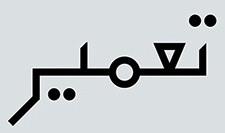 Karachi, Pakistan-based designer of a minimalist Urdu typeface in 2014. [
Karachi, Pakistan-based designer of a minimalist Urdu typeface in 2014. [ Ata Syed (Karachi, Pakistan) has a dual identity at FontStruct, where he is one of the most prolific contributors. He is known there as
Ata Syed (Karachi, Pakistan) has a dual identity at FontStruct, where he is one of the most prolific contributors. He is known there as 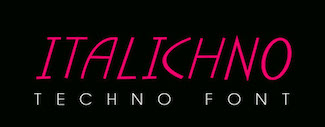 Lahore, Pakistan and/or London, UK-based designer of Contour (a titling sans), Chubby (2019), the free display sans Linicircle (2017), the free rounded sans typeface Roudge or Wasey E (2019), the modular typeface Bract (2019), the copperplate serif Billag (2019), the color font Taster (2019), Zonta (2019), the techno or architectural lettering font Italichno (2018), the geometric shape fonts Shape (2019) and Shape Out (2019), and the semi-stencil typeface CoolCut (2019).
Lahore, Pakistan and/or London, UK-based designer of Contour (a titling sans), Chubby (2019), the free display sans Linicircle (2017), the free rounded sans typeface Roudge or Wasey E (2019), the modular typeface Bract (2019), the copperplate serif Billag (2019), the color font Taster (2019), Zonta (2019), the techno or architectural lettering font Italichno (2018), the geometric shape fonts Shape (2019) and Shape Out (2019), and the semi-stencil typeface CoolCut (2019).  During her studies in Karachi, Pakistan, Hira Fareed designed the very elegant art deco typeface Elevance (2014), and the experimental font Iris (2014), which is based on photographs of reading glasses. This was earlier called
During her studies in Karachi, Pakistan, Hira Fareed designed the very elegant art deco typeface Elevance (2014), and the experimental font Iris (2014), which is based on photographs of reading glasses. This was earlier called  Ashfaq A. Niazi is a designer in Lahore, Pakistan, who graduated from Govt Islamia College in Lahore. Since 2008, he is associated with the King Fahd Glorious Quran Printing Complex in Saudi Arabia, which in 2009 released the free Arabic language font
Ashfaq A. Niazi is a designer in Lahore, Pakistan, who graduated from Govt Islamia College in Lahore. Since 2008, he is associated with the King Fahd Glorious Quran Printing Complex in Saudi Arabia, which in 2009 released the free Arabic language font 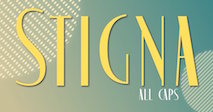 Pakistan-based designer of the (Latin) minimalist condensed sans typeface family
Pakistan-based designer of the (Latin) minimalist condensed sans typeface family 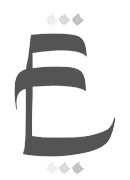 Graphic designer and photographer in Karachi, Pakistan. She created the
Graphic designer and photographer in Karachi, Pakistan. She created the 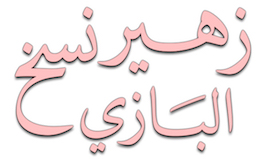 [
[ Arabic type foundry. Typefaces include Muhammad Musa Albazi Naskh and Zuhair Albazi Naskh. They specialize in true calligraphic Tatweel typefaces.
Arabic type foundry. Typefaces include Muhammad Musa Albazi Naskh and Zuhair Albazi Naskh. They specialize in true calligraphic Tatweel typefaces. 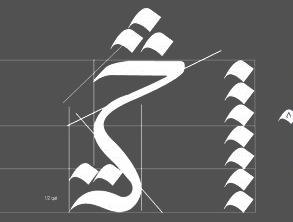 Gilgit, Pakistan-based creator of a Burushaski language font (2014) in a thesis project. [
Gilgit, Pakistan-based creator of a Burushaski language font (2014) in a thesis project. [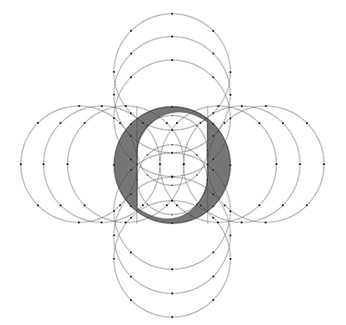 Salman Muavia (Lahore. Pakistan) created the compass-and-ruler Latin typeface
Salman Muavia (Lahore. Pakistan) created the compass-and-ruler Latin typeface 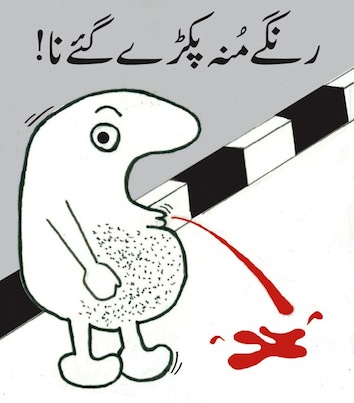 Karachi, Pakistan-based designer of the dry brush Urdu typeface Takhti (2014).
Karachi, Pakistan-based designer of the dry brush Urdu typeface Takhti (2014). 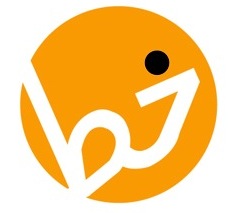 During her graphic design studies in Karachi, Pakistan, Saria Iqbal Qureshi created a geometric Urdu typeface called
During her graphic design studies in Karachi, Pakistan, Saria Iqbal Qureshi created a geometric Urdu typeface called 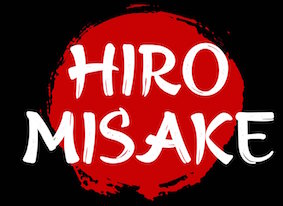 Karachi, Pakistan and/or Yogyakarta, Indonesia-based designer of mostly script or signature typefaces, but also an occasional display sans or serif. Operating under the name Hero, she had published these typefaces by 2020: Absolute Nature, Amanda Vinola, Annie Signature, Armadira, Amanda Signature, Amanda Vinola, Andigo, Bandonde, Beach Front, Britanie, Beasticle, Beringas, Black William, Blade Brotherhood (pointy sderifed), Blue Island, Bodikago, Bourdeway, Broken Mirror, Camptown, Caporion, Camptown, Cardova, Caroline Wilson, Charles Brown, Christopher Lynn, Disc House, Elsa Sayonara, Elysium, Fight Bear, Food Delight, Galapagos, Golden Arrow, Good Summer, Gunman, Handmade Brushes, Head Capital, Headway, Heatwalk (a high contrast brush script), High Monday, Hiro Misake (oriental brush emulation), Honey Pocaline, Kampium, King Helena Script, Legalitere, Light Paprica, Loccomotive Stencil, Marryland, Moor Vantage, Modavina, Monggoland, Monilea, Monzana, Moongarz, Morigana Brush, Nandia, Neogordon, Neoradical, Nineland, North Forest, Oregon Point, Palomas Casual, Paperbreak, Proxon Sans, Quick Junior, Quinn Marriott, Raymond Caroline (a signature script), Redmond Fashion, Rich Rebecca, Right Signature, Rockbubble Sans, Rogertone, Rose Marine, Royal Kingsman, Saint Capital, Samantha Brandon, Signcore Sans, Spice Wallet, Storystone (a display serif), Strongvilla, Valibrush, Velodrome (stencil), Vertilaser, View Vacation, Volacrome Sans, Warangga, Washington, Watch Quinn, Wolfstar, Wolington, Yosamint, Yosarosa.
Karachi, Pakistan and/or Yogyakarta, Indonesia-based designer of mostly script or signature typefaces, but also an occasional display sans or serif. Operating under the name Hero, she had published these typefaces by 2020: Absolute Nature, Amanda Vinola, Annie Signature, Armadira, Amanda Signature, Amanda Vinola, Andigo, Bandonde, Beach Front, Britanie, Beasticle, Beringas, Black William, Blade Brotherhood (pointy sderifed), Blue Island, Bodikago, Bourdeway, Broken Mirror, Camptown, Caporion, Camptown, Cardova, Caroline Wilson, Charles Brown, Christopher Lynn, Disc House, Elsa Sayonara, Elysium, Fight Bear, Food Delight, Galapagos, Golden Arrow, Good Summer, Gunman, Handmade Brushes, Head Capital, Headway, Heatwalk (a high contrast brush script), High Monday, Hiro Misake (oriental brush emulation), Honey Pocaline, Kampium, King Helena Script, Legalitere, Light Paprica, Loccomotive Stencil, Marryland, Moor Vantage, Modavina, Monggoland, Monilea, Monzana, Moongarz, Morigana Brush, Nandia, Neogordon, Neoradical, Nineland, North Forest, Oregon Point, Palomas Casual, Paperbreak, Proxon Sans, Quick Junior, Quinn Marriott, Raymond Caroline (a signature script), Redmond Fashion, Rich Rebecca, Right Signature, Rockbubble Sans, Rogertone, Rose Marine, Royal Kingsman, Saint Capital, Samantha Brandon, Signcore Sans, Spice Wallet, Storystone (a display serif), Strongvilla, Valibrush, Velodrome (stencil), Vertilaser, View Vacation, Volacrome Sans, Warangga, Washington, Watch Quinn, Wolfstar, Wolington, Yosamint, Yosarosa.  Pakistan-based designer of the 8-style neutral sans family Premium Sans (2021). [
Pakistan-based designer of the 8-style neutral sans family Premium Sans (2021). [